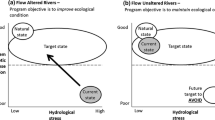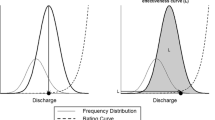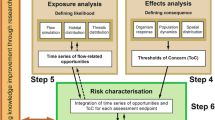Abstract
Environmental flows aim to influence river hydrology to provide appropriate physical conditions for ecological functioning within the restrictions of flow regulation. The hydrologic characteristics of flow events, however, may also lead to unintended morphologic effects in rivers, such as increases in riverbank erosion beyond natural rates. This may negatively impact habitat for biota, riparian infrastructure, and land use. Strategic environmental flow delivery linked to monitoring and adaptive management can help mitigate risks. We monitor riverbank condition (erosion and deposition) relative to environmental flows on the Goulburn River, Victoria, Australia. We describe the process of adaptive management aimed at reducing potential impacts of flow management on bank condition. Field measurements (erosion pins) quantify the hydrogeomorphic response of banks to the delivery of planned and natural flow events. Managed flows provide opportunities for monitoring riverbank response to flows, which in turn informs planning. The results demonstrate that environmental flows have little influence on bank erosion and visual perceptions in the absence of monitoring are an unreliable guide. This monitoring project represents a mutually beneficial, science-practice partnership demonstrating that a traditional ‘know then do’ approach can be foreshortened by close collaboration between researchers and managers. To do so requires transparent, often informal lines of communication. The benefits for researchers–a more strategic and targeted approach to monitoring activities; and benefits for the practitioners–reduced time between actions and understanding response; mean that a learn by doing approach is likely to have better outcomes for researchers, stakeholders, the public, and the environment.












Similar content being viewed by others
References
Abernethy B, Judd D, Davies M (2006) Lower Goulburn Floodplain Study. Prepared by Sinclair Knight Merz for the Goulburn Broken Catchment Management Authority, Shepparton, Victoria, pp 30
Abernethy B, Rutherfurd I. D (2001) The distribution and strength of riparian tree roots in relation ot riverbank reinforcement. Hydrol Process 15(1):63–79.
Arthington A (2012) Environmental flows: saving rivers in the third millenium. University of California Press, Berkely and Los Angeles
Bowler J M (1978) Quaternary climate and tectonics in the evolution of the Riverine Plain. Landscape Evolution, Southeastern Australia
Bunn SE, Arthington AH (2002) Basic principles and ecological consequences of altered flow regimes for aquatic biodiversity. Environ Manage 30(4):492–507
Clarke SJ, Bruce-Burgess L, Wharton G (2003) Linking form and function: towards an eco-hydromorphic approach to sustainable river restoration. Aquatic Conserva Mar Freshwater Ecosyst 13(5):439–450
Corenblit D, Steiger J, Gurnell A, Tabacchi E, Roques L (2009) Control of sediment dynamics by vegetation as a key function driving biogeomorphic succession within fluvial corridors. Earth Surf Process Landforms 34:1790–1810
Cottingham P, Vietz G, Roberts J, Frood D, Graesser A, Kaye J, Shields A (2013) Lower Goulburn River: observations on managing water releases in light of recent bank slumping, Report prepared for the Goulburn-Broken Catchment Management Authority
Couper P, Stott T, Maddock I (2002) Insights into river bank erosion processes derived from analysis of negative erosion-pin recordings: observations from three recent UK studies. Earth Surf Process Landforms 27(1):59–79
Cullen P (1990) The turbulent boundary between water science and water management. Freshwater Biol 24(201–209):201–209
Erskine WD (1996) Downstream hydrogeomorphic impacts of Eildon Reservoir on the Mid-Gouldburn River, Victoria. Proc R Soc of Vic 108(1):1–15
Florsheim JL, Mount JF, Chin A (2008) Bank erosion as a desirable attribute of rivers. BioScience 58(6):519–529
Fryirs K, Chessman B, Rutherfurd I (2013) Progress, problems and prospects in Australian river repair. Mar Freshwater Res 64(7):642–654
Grove J, Croke J, Thompson C (2013) Quantifying different riverbank erosion processes during an extreme flood event. Earth Surf Process Landforms 38(12):1393–1406
King AJ, Ward KA, O’Connor P, Green D, Tonkin Z, Mahoney J (2010) Adaptive management of an environmental watering event to enhance native fish spawning and recruitment. Freshw Biol 55:17–31
Lawler DM (1993) The measurement of river bank erosion and lateral channel change: A review. Earth Surf Process Landforms 18:777–821
Lunn D, Spiegelhalter D, Thomas A, Best N (2009) The BUGS project: Evolution, critique and future directions (with discussion). Stat Med 28:3049–3082
Medema W, McIntosh BS, Jeffery PJ (2008) From premise to practice: a critical assessment of integrated water resources management and adaptive management approaches in the water sector. Ecol Soc 13(2):29
Meitzen KM, Doyle MW, Thoms MC, Burns CE (2013) Geomorphology within the interdisciplinary science of environmental flows. Geomorphology 200:143–154
Newson MD, Large ARG (2006) ‘Natural’ rivers, ‘hydromorphological quality’ and river restoration: a challenging new agenda for applied fluvial geomorphology. Earth Surf Process Landforms 31:1606–1624
Osterkamp WR, Hupp CR (2010) Fluvial processes and vegetation — Glimpses of the past, the present, and perhaps the future. Geomorphology 116(3–4):274–285
Pahl-Wostl (2007) Transitions towards adaptive management of water facing climate and global change. Water Res Manage 21:49–62
R Development Core Team (2010) A language and environment for statistical computing. R Foundation for Statistical Computing, Vienna, Austria, http://www.r-project.org/
Richter BD (2010) Re-thinking environmental flows: from allocations and reserves to sustainability boundaries. River Res Appl 26(8):1052–1063
Sturz S, Ligges U, Gelman A (2005) R2WinBUGS: A Package for Running WinBUGS from R. J Stat Softw 12(3):1–16
Toomey AH (2016) What happens at the gap between knowledge and practice? Spaces of encounter and misencounter between environmental scientists and local people. Ecol Soc 21(2):28
Vietz G J, Stewardson M, Finlayson B (2006), Flows that form: the hydromorphology of concave-bank bench formation in the Ovens River, Australia, In: Rowan JS, Duck RW and Werritty A (eds) IAHS Special Publication 306, Sediment Dynamics and the Hydromorphology of Fluvial Systems, IAHS Press, Wallingford, UK, pp 267–276.
Webb A, Casanelia S, Earl G, Grace M, King W, Koster K, Morris V, Pettigrove V, Sharpe A, Townsend K, Vietz G, Woodman A, Ziebell A (2016) Commonwealth Environmental Water Office Long Term Intervention Monitoring Project: Goulburn River Selected Area evaluation report 2014-15, University of Melbourne Commercial, Melbourne, pp. p. ix+107
Webb JA, Stewardson MJ, Chee YE, Schreiber ESG, Sharpe AK, Jensz MC (2010) Negotiating the turbulent boundary: the challenges of building a science-management collaboration for landscape-scale monitoring of environmental flows. Mar Freshwater Res 61:798–807
Windecker S M, Vietz G J (2014) Assessing the influence of environmental flows on physical habitat. In: Australian Stream Management Conference, Catchments to Coast, Conference, June 30 to July 2, 2014, Townsville, Queensland, Published by the University of Melbourne, pp 140–142
Acknowledgements
This project was undertaken by Streamology Pty Ltd as a sub-contractor to The University of Melbourne, and would not have been possible without the input of many individuals and organisations beyond the co-authorship list. For fieldwork and desktop/operational assistance the following have been of great assistance: Simon Casanelia, Megan Judd, Daniel Lovell, and Geoff Earl (Goulburn Broken Catchment Management Authority), Michael Sammonds (Melbourne University), Amanda Woodman and Ben Baker (Jacobs), Andrew Shields and Guy Ortlipp (GMW), and Kerry Greenwood (MDBA). We would particularly like to thank Iwona Conlan (formerly the CEWO), as well as Keith Chalmers and Courtney Johnson (VEWH), for input into setting up and managing this program and valuable comments on the manuscript. Finally, we would like to thank the editors of Environmental Management and this special issue.
Funding
This work was supported by the VEWH, the CEWO, and the GBCMA.
Author information
Authors and Affiliations
Corresponding author
Ethics declarations
Conflict of Interest
The authors declare that they have no competing interests.
Electronic supplementary material
Rights and permissions
About this article
Cite this article
Vietz, G.J., Lintern, A., Webb, J.A. et al. River Bank Erosion and the Influence of Environmental Flow Management. Environmental Management 61, 454–468 (2018). https://doi.org/10.1007/s00267-017-0857-9
Received:
Accepted:
Published:
Issue Date:
DOI: https://doi.org/10.1007/s00267-017-0857-9




